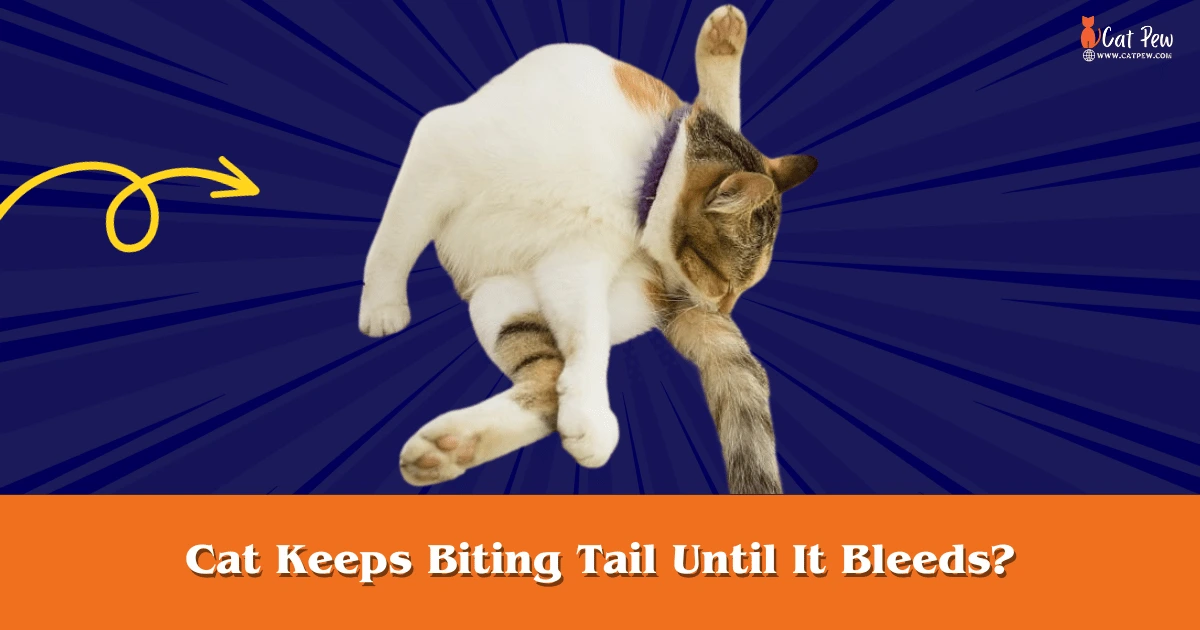Cat Keeps Biting Tail Until It Bleeds?
A cat biting its tail to the point of bleeding may be suffering from stress or a medical condition. Prompt veterinary attention can help determine the cause and treatment.
Cat owners often find themselves puzzled by their feline’s quirky behaviors, but excessive tail-biting can signal a problem. Cats engage in tail-biting for various reasons, including anxiety, boredom, compulsive disorders, or underlying medical issues such as allergies, infections, or pain. Recognizing this behavior as a potential cry for help is crucial for any pet owner. Providing timely care and addressing the root cause can alleviate your cat’s discomfort and prevent further harm.
Ensuring your cat has a stimulating environment, regular health check-ups, and a comforting routine can mitigate stress-related biting and contribute to their overall well-being. Noticing and addressing your cat’s tail-biting habit early can lead to a happier, healthier pet.
Understanding Cat Tail-biting Behavior
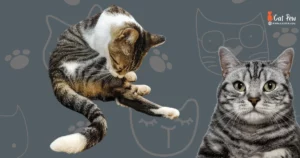
Cat tail-biting behavior can be both puzzling and concerning for pet owners. While some tail-nibbling may be a harmless aspect of your cat’s grooming routine, it can sometimes escalate to a more serious issue, particularly if your cat is biting its tail until it bleeds. This concerning action warrants closer inspection to understand the underlying causes and to differentiate between regular play and harmful behavior that may require intervention.
Causes Of Tail-biting In Cats—Analysing the Triggers
Determining why a cat bites its tail is crucial for addressing the problem effectively. Here are some common triggers:
- Parasites: Fleas or ticks might congregate near the tail, causing irritation that leads to biting.
- Stress or Anxiety: Tail-biting can be stress-related, triggered by environmental or routine changes.
- Health Issues: Pain or discomfort from injuries or conditions like arthritis may lead to self-mutilating behaviors.
- Psychological Conditions: Similar to obsessive-compulsive disorder in humans, some cats develop compulsive habits that include tail biting.
- Skin Conditions: Allergies or dermatitis can cause itchiness and discomfort, leading to excessive grooming and biting.
- Neurological Disorders: Issues affecting the nervous system can manifest in abnormal behaviors, including attacking one’s tail.
Seeking a professional vet’s advice is advisable if you notice your cat persistently biting its tail, especially to the point of bleeding.
Differentiating Between Playful Nibbling And Harmful Biting
Understanding the difference between playful nibbling and harmful biting is key to ensuring your cat’s well-being:
| Playful Nibbling | Harmful Biting |
|---|---|
| Gentle and infrequent, often during play or grooming. | Intense, repetitive, and may cause skin breaks or bleeding. |
| Does not cause distress or pain to the cat. | Can lead to pain, infection, and visible distress. |
| Typical behavior for kittens as they explore and learn. | Abnormal for adult cats and often signifies a problem. |
| No visible damage to the tail or surrounding areas. | May result in visible damage such as missing fur, wounds, or scabs. |
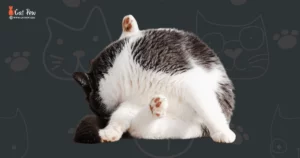
Recognizing Signs Of Obsessive Or Aggressive Tail-chasing
While it’s normal for cats to chase their tails occasionally as a form of play, certain behaviors indicate a more serious issue. Be vigilant for signs such as:- Persistent chasing, even after distractions
- Attacking the tail with unusually high aggression
- Biting the tail until it shows visible wounds or bleeding
- Over-grooming or licking the tail area excessively
- Showing signs of distress or frustration during the behavior
- Lack of interest in other activities once obsessed with the tail
Assessing The Severity Of The Situation – When To Worry
Not all tail-chasing should cause alarm, but it’s critical to evaluate the situation’s seriousness. The following are signs that it’s time to take action:| Behavior | Description | Action Required |
|---|---|---|
| Mild Chasing | Occasional play with no signs of distress | Monitor, no immediate concern |
| Intense Chasing | Frequent with increased aggression | Further observation, consider environmental changes |
| Self-injury | Biting until bleeding, visible wounds | Immediate veterinary attention |
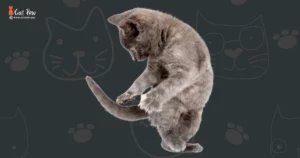
Investigating The Possibility Of Hidden Injuries Or Infections
Undetected injuries or infections in a cat’s tail can be a significant source of pain and discomfort, leading them to bite at the affected area. Cats are agile creatures often engaging in enthusiastic play, leading to injuries that may not be immediately visible to the naked eye. Such injuries can include:- Fractures: A broken bone in the tail can cause severe pain.
- Sprains: Damage to the ligaments that could prompt biting.
- Abscesses: These pockets of infection can form from bites or scratches.
Exploring Skin Conditions And Allergies That Provoke Biting
Various skin conditions and allergies can induce itching and discomfort, prompting a cat to bite its tail repeatedly. Factors such as parasites, environmental allergens, or food sensitivities can contribute to restlessness and skin irritation. Possible skin-related issues include:- Flea allergy dermatitis: An allergic reaction to flea bites that causes intense itching.
- Mites or lice: These parasites can lead to skin irritation.
- Eczema or dermatitis: Inflammation of the skin that may be due to allergies or other factors.
Psychological Factors And Stress Response
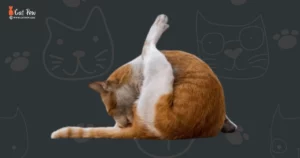
The Role Of Anxiety And Boredom In Self-mutilating Behaviors
Anxiety and boredom in cats can manifest through various behaviors, including self-mutilation such as tail-biting. Lack of mental stimulation and a stressful environment can lead these sensitive animals to develop compulsive habits that are harmful, such as biting their tails until they bleed.- Signs of anxiety: Hiding, aggression, changes in eating habits, and excessive grooming.
- Boredom indicators: Overeating, lethargy, and interest in unusual objects.
Effects Of Environmental Changes On Your Cat’s Tail-biting
Cats are creatures of habit and thrive on routine. Diverse environmental changes — from rearranging furniture to introducing new members into the household — can deeply affect your cat. This disruption in the status quo may evoke a stress response, leading to the damaging behavior of tail-biting.| Environmental Change | Possible Stress Response |
|---|---|
| New Pet or Family Member | Insecurity leading to aggressive grooming |
| Moving to a New Home | Disorientation and tail-biting |
| Change in Daily Routine | Anxious behaviors, such as excessive tail-chasing |
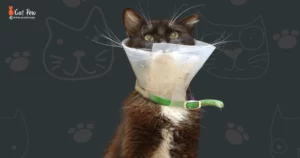
Introducing Safe And Engaging Toys For Playtime
Cats are natural hunters, and they need to express this instinctive behavior. Interactive toys provide an excellent outlet for their pent-up energy and predatory instincts. Look for toys that mimic the movement of prey, such as:- Feather wands – These simulate the fluttering of birds.
- Laser pointers – They can keep your cat engaged in a fun and healthy chase (but avoid pointing directly at the eyes).
- Motorized mice – Offering a life-like scurrying motion to pique your cat’s interest.
Creating A Stimulating Environment To Curb The Behavior
A well-stimulated cat is less likely to engage in negative behaviors like excessive tail biting. Transform your home into a feline paradise with the following steps to promote mental stimulation and physical activity:- Cat trees and scratching posts – These are fundamental for allowing vertical exploration and claw maintenance.
- Window perches – Ideal for bird watching and sunbathing, they provide sensory enrichment.
- Puzzle feeders – They challenge your cat’s intellect and slow down eating habits.
 Professional intervention becomes crucial if your cat’s compulsive behavior escalates to the point where it’s harming itself. A cat that repeatedly bites its tail until it bleeds is in distress, and this behavior warrants more than a watchful eye or simple home remedies. We must recognize the need for a specialist’s insight to address both the immediate injuries and the underlying causes. It’s a dual-front approach where the physical wounds require treatment, and the psychological triggers necessitate understanding and management.
Professional intervention becomes crucial if your cat’s compulsive behavior escalates to the point where it’s harming itself. A cat that repeatedly bites its tail until it bleeds is in distress, and this behavior warrants more than a watchful eye or simple home remedies. We must recognize the need for a specialist’s insight to address both the immediate injuries and the underlying causes. It’s a dual-front approach where the physical wounds require treatment, and the psychological triggers necessitate understanding and management.When To Consult A Veterinarian Or A Feline Behaviorist
The first step to recovery is Identifying signs that your cat needs professional help. If your cat exhibits extreme anxiety, aggression, or obsessive behavior that results in self-harm, these are clear indicators that it’s time to seek expert advice. A veterinarian can diagnose any medical issues that may be contributing to your cat’s tail-biting, while a feline behaviorist specializes in the psychological aspects, addressing stressors and environmental factors.- Chronic Injuries: Repeated biting leading to open wounds.
- Behavioral Changes: Signs of stress or anxiety paired with aggressive tail-chasing or biting.
- Non-responsive to Initial Interventions: Lack of improvement despite home remedies or environmental changes.
Treatments And Therapies To Help Your Cat Recover
Once a professional is involved, a tailored treatment plan is crucial for your cat’s recovery. The approach usually involves a combination of medical treatment, environmental modifications, and possibly behavioral Therapy.| Intervention | Objective | Examples |
|---|---|---|
| Medical Treatment | To manage pain, heal wounds, and address any underlying physical health issues. | Antibiotics, pain relievers, wound care, and E-collars. |
| Environmental Modification | To reduce stress and remove stimuli that trigger tail-biting. | Providing secure hiding spots, reducing noise, and offering puzzle feeders to keep them engaged. |
| Behavioral Therapy | To modify and manage the cat’s behavior through positive reinforcement and structured routines. | Clicker training, scent marking, scheduled playtimes, and pheromone diffusers. |
Frequently Asked Questions On Cat Keeps Biting Tail Until It Bleeds
Why Does My Cat Keep Biting Its Tail Until It Bleeds?
Cats may bite their tails due to stress, anxiety, allergies, or skin irritations.
Why Does My Cat Bite Its Tail Excessively?
Cats may bite their tails due to various reasons, such as flea infestations, stress, anxiety, or even medical conditions like allergies. Observing their behavior and consulting a vet for proper diagnosis and treatment is essential.
What Can Stop A Cat From Tail Biting?
To stop your cat from biting its tail, ensure a flea-free environment, provide stress-relieving activities, and maintain a calm atmosphere. Consult a vet for potential allergies or other medical issues that may require treatment.
Is It Normal For A Cat To Constantly Bite Its Tail?
No, excessive tail biting is not normal behavior and should be addressed by a veterinarian.
Is Tail Biting In Cats A Sign Of Pain?
Tail biting in cats can be a sign of pain or discomfort. It’s often a cat’s response to an itch, irritation, or injury they cannot otherwise alleviate. A veterinary check-up can help determine the underlying cause of pain.
How Do You Care For A Cat With A Bleeding Tail?
Immediately clean the wound with mild antiseptic and apply pressure to stop bleeding. Avoid bandaging too tightly. Seek veterinary care to assess for infection, prescribe antibiotics if necessary, and prevent further self-injury.
Why Does My Cat Bite The Skin Until It Bleeds?
Cats may bite when they are overstimulated, anxious, or in pain.
What Are The Signs Of An Infected Cat’s Tail?
Signs may include swelling, redness, discharge, or a foul odor.
Can A Cat’s Limp Tail Heal On Its Own?
Yes, in many cases a cat’s limp tail will heal on its own with rest and time.
What Are The Symptoms Of An Infected Cat’s Tail?
Symptoms may include swelling, redness, discharge, and the cat showing signs of discomfort or pain.
Conclusion Of Cat Keeps Biting Tail Until It Bleeds
Understanding why your cat bites its tail to the point of bleeding is crucial for its well-being. Promptly addressing the problem by consulting a vet can prevent more severe issues. Implementing the recommended solutions promotes a happy, healthier pet. Remember, a content cat is a tail-biting-free cat. Your feline friend deserves the best care we can provide.
Winston
I'm Winston, the author of this feline-focused (Catpew.com) blog . My love for cats goes back to my childhood, when I spent countless hours playing with my family's tabby, Mittens. This furry friend instilled in me a deep appreciation for the unique personalities, playful nature, and unconditional love that cats offer.

